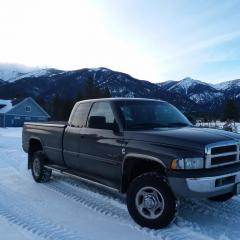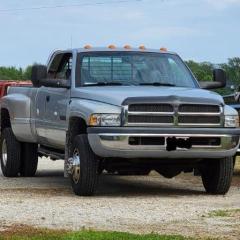- Replies 32
- Views 7.5k
- Created
- Last Reply
Top Posters In This Topic
-
blacker_canyons 12 posts
-
 Mopar1973Man 6 posts
Mopar1973Man 6 posts -
 Tractorman 4 posts
Tractorman 4 posts -
Great work! 4 posts
Most Popular Posts
-
Pull the entire hydraulic system out and hang it by the reservoir and pump the slave cylinder. Quickly in, release slowly. You cannot bled in the vehicle because the line has a high spot that gathers
-
two or three miles @ 25 MPH is pretty survivable.
-
I replaced my clutch hydraulics about a year and a half ago. I also purchased a pre-bled setup same as you did. I had issues with it after install also. I had to re-bleed the clutch master and slave b



have had my truck a few months. It worked well for about 1000 miles and has been a nightmare ever since. without getting into all the details of all the parts I've replaced and the ridiculous number of times and ways it's left me stranded in about 3500 miles, I'll just focus on the transmission issues here:
it started gradually shifting worse and worse. Initially it seemed to mostly be 3rd gear, but eventually, over the course of a couple weeks, it was all the gears. Grinds the worst and the most consistently going into 3rd but now grinds in all the gears randomly, and the shifting in general is very hard. Can't get it into reverse without putting it into second and revving it first, and then quickly putting it into reverse.
so I initially tried replacing the clutch hydraulics. Got a pre-bled master/slave assembly from Oreilly's and installed it. For a couple days, it was better, and then it went back to how it was before.
tried replacing the transmission fluid with Amsoil MTF, including adding an extra quart. Seemed better for about a day, then went back to doing what it was doing before.
last weekend, I replaced the clutch and flywheel with new ones from Valair. for the last week, it's been driving great. shifting was significantly improved. After a couple days, I was confident I had found the problem. I went out of town for two days for work, came back today, got in my truck to drive home, and it's shifting rough again. grinding in 3rd unless I double clutch, and starting to want to grind in all the other gears again as well. again can't put it in reverse without first putting it in second.
Is it possible I bought a pre bled clutch hydraulics assembly that has air in it? should I try bleeding it before I order a transmission rebuild kit? at this point all I can figure is that the syncros are going out, but it doesn't make any sense to me that every time I've attempted to fix it, it's better for a day or two and then goes back to sucking.
really fed up with this truck. on the verge of selling it for a loss so I dont have to mess with it anymore. 20+ trucks and 11 motorcycles, all except one have been 20 years old or older, have had more problems with this truck than the rest of them combined.